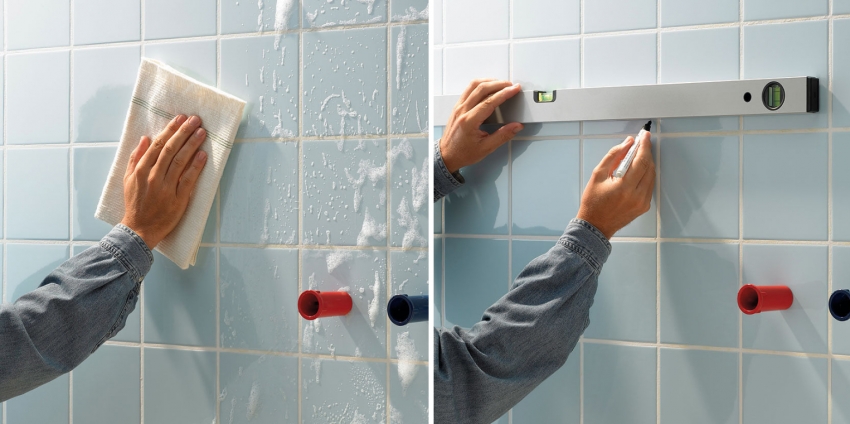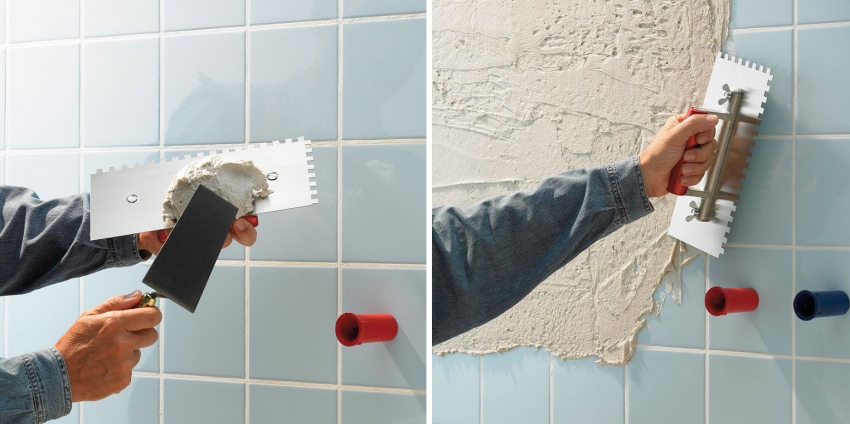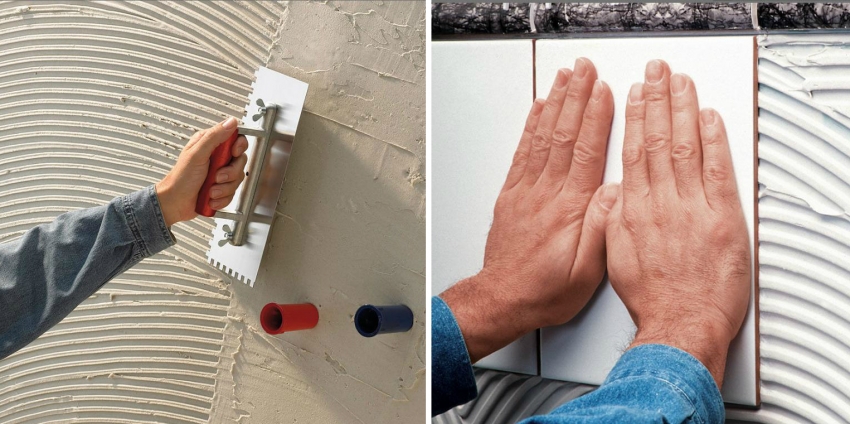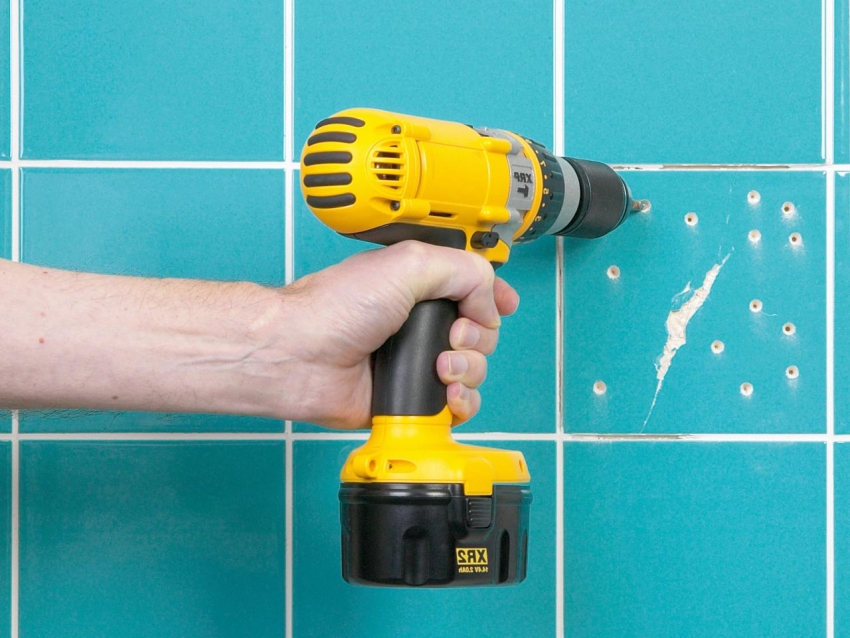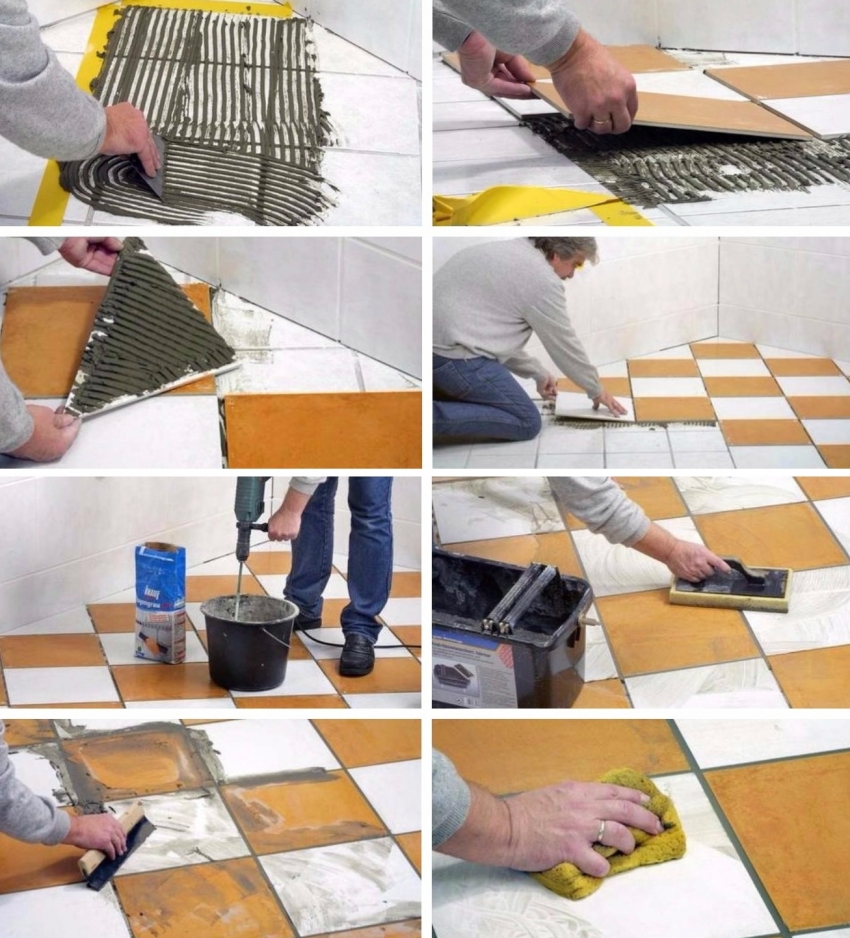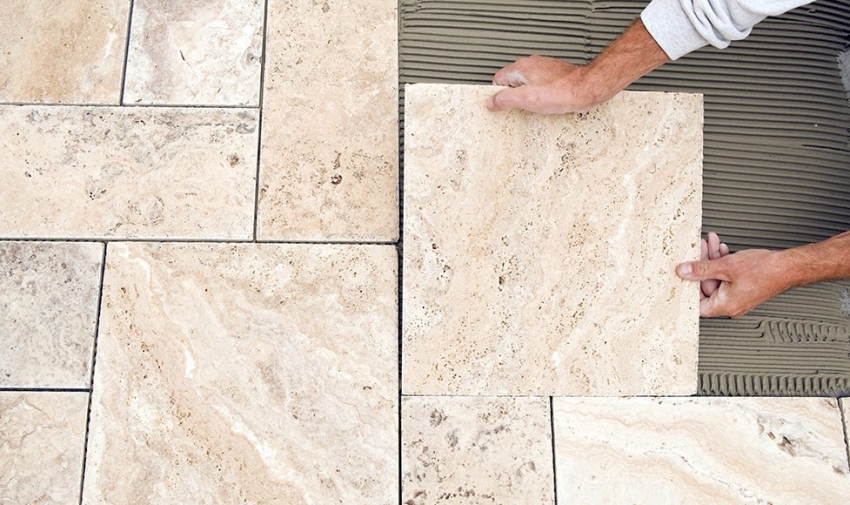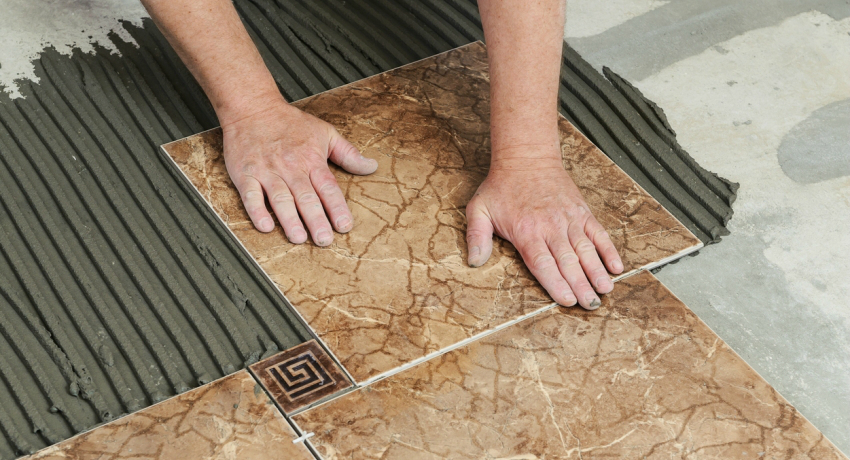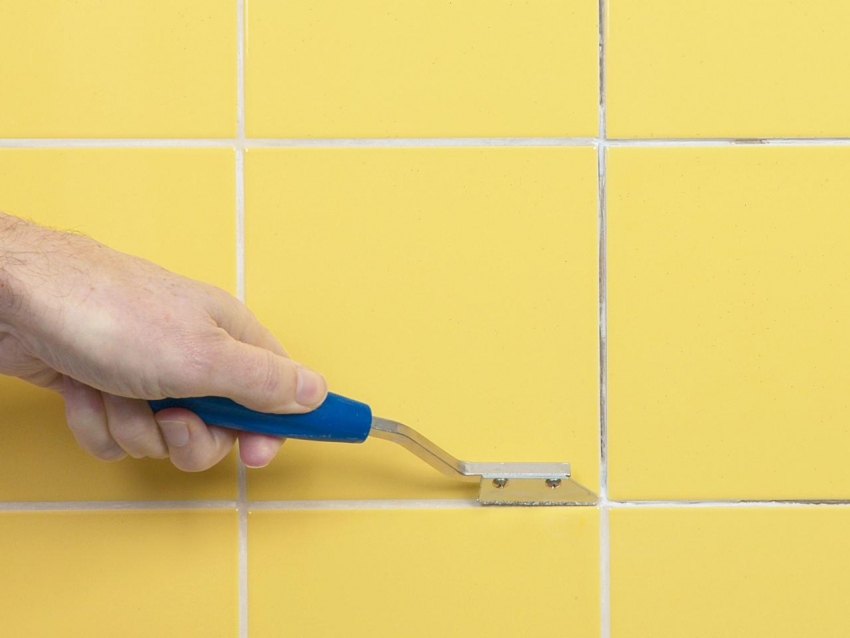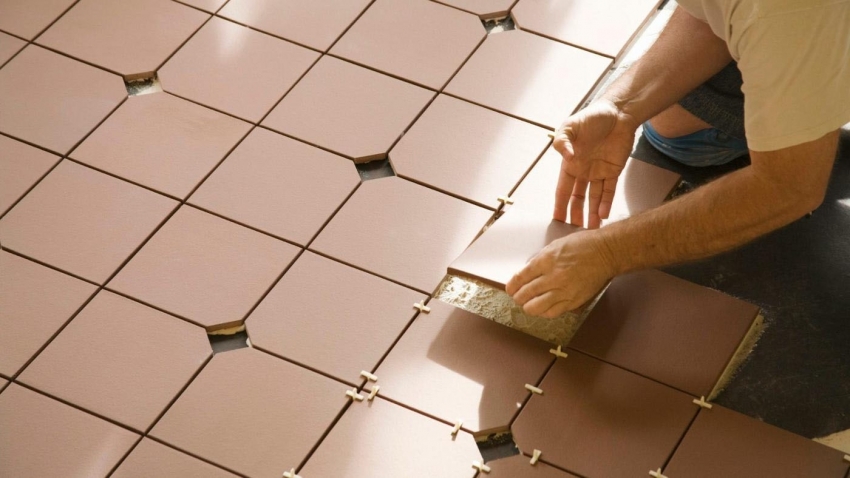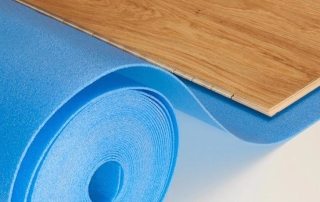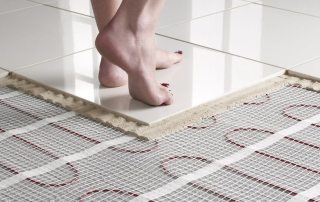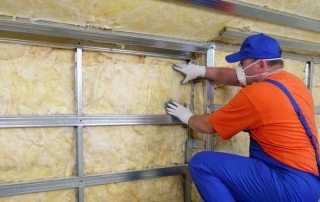In the process of carrying out repair work with your own hands, you have to face many difficult questions, the correct answers to which will determine the quality and service life of the new finish. One of these questions is - can you put tiles on tiles? Consider whether it is possible to use the old tile as a basis for a new coating, or is it still better to dismantle it in order to avoid possible problems.

Laying a new tile floor on a tile is possible subject to a high-quality check and preparation of the base
Content [Hide]
- 1 Why you may need to preserve the old tile flooring
- 2 Is it possible to lay tiles on tiles: an assessment of the old coating
- 3 Is it possible to lay tiles on tiles on the wall: features of the work
- 4 How to put tiles on tiles: features of surface preparation
- 5 How to glue tiles to tiles: step-by-step instructions for work
- 6 How to understand that you should not glue tiles on tiles: expert recommendations
- 7 How to remove old grout from tile joints
- 8 Is it possible to lay tiles on tiles on the floor: features of the work
- 9 Is it possible to make a self-leveling floor on an old tile
- 10 Is it possible to lay tiles on tiles outdoors
Why you may need to preserve the old tile flooring
There are several good reasons that create a reason to think about refusing to dismantle the old coating before laying a new one. These are mainly economic factors, including:
- significant savings in time and effort spent on repair work;

It is worth considering that the new layer of tiles should not be too heavy if there is no confidence in the reliability of the base attachment.
- most likely, in the process of dismantling, you will have to face the breaking off of individual pieces of the cement-sand screed. This will entail additional work on its replacement or partial restoration. Also, if a prefabricated leveling system made of plasterboard and plywood was used, it will need to be replaced;
- during operation, dusting will be minimal, which cannot be said about cases when old tiles have to be removed. In this case, it will be necessary to completely empty not only the room itself, but also adjacent to it, since often covering pieces of furniture and equipment with polyethylene is not enough;
- keeping the old coating, you can avoid the need to deal with the removal of construction waste;
- it happens that it is impossible to wait for the period of time necessary for the complete hardening of a new screed. In this case, it is also better to use old tiles as a base.
Thus, there are many reasons to keep the old coating. The main thing is to correctly assess whether it is possible to put tiles on tiles in this case so that in the end the resulting coating is sufficiently strong and reliable.
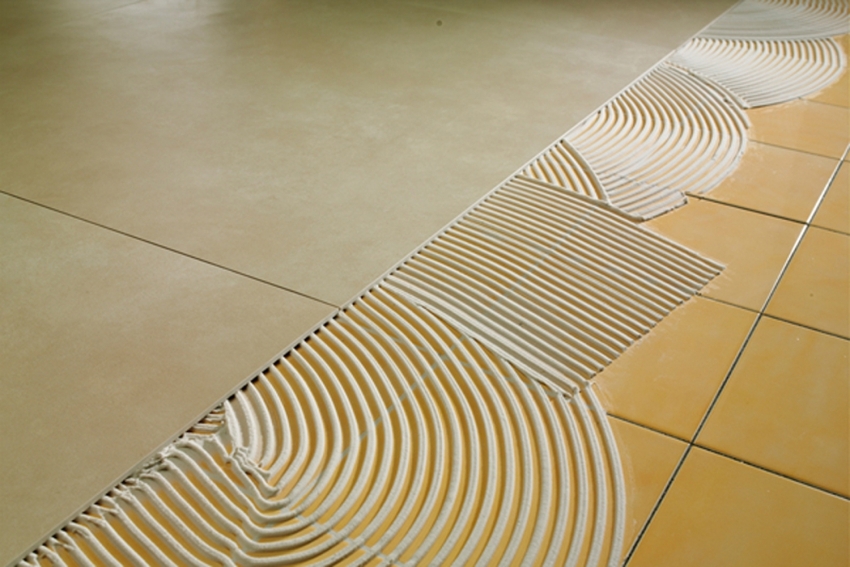
The use of high-quality adhesive composition determines the duration of the service life of a new layer of tiles.
Is it possible to lay tiles on tiles: an assessment of the old coating
In order to determine whether it is possible to lay a new tile on a layer of a similar coating, it is necessary to make a preliminary examination of the base. First of all, you need to make sure that all the elements are firmly fixed. It is necessary to pay attention to the presence of any, even the smallest chips, cracks and loosely fixed elements. To do this, each tile must be tapped with a rubber hammer. Loosely attached elements will rattle.
All elements that are not well fixed or have cracks must be chipped off. The decision to install new tiles on top of the old ones should be based on how large a percentage of the old tiles are in good condition and hold up securely.
Helpful advice!Pay attention to the existing floor level. As a result of the installation of an additional layer, its height should not exceed the height of the threshold. If the thickness of the flooring is too high, it will be better to dismantle the old covering and lay the new tile directly on the base before installation.
Is it possible to lay tiles on tiles on the wall: features of the work
The main difficulty that one has to face in the process of installing a new coating on top of the old one is the effect of gravity, because over time, the tile will shrink, and the old base must withstand this. Therefore, it is necessary to ensure the highest quality adhesion between the layers. First, you need to take care of cleaning the seams, at least partially removing the glazed layer of the tile, and purchase a concrete contact.
Helpful advice! Concrete contact is usually applied with a trowel or trowel, carefully leveling it so that the applied layer is as uniform as possible. The consumption should be approximately 300 grams per 1 m².
If a laying new flooring not planned, in the process of laying tiles on the wall, the floor must be protected. The skirting boards and the floor covering must be covered with plastic wrap to avoid the appearance of specific, and practically impossible to remove stains.
In the case of working with a wall surface, the drying period of the concrete contact should be at least 5-7 hours. In this case, it is better to give preference to the densest possible synthetic modification.
Otherwise, the tiles are laid in a standard way gradually on small sections of the wall. This is due to the high drying rate of the adhesive. The elements are laid out over an area of 1-1.5 m² and pressed with some effort. Until the glue hardens completely, some irregularities and imperfections can be corrected using a rubber mallet.
Thus, answering the question whether or not you can lay tiles on tiles on the wall, the focus is on the technology and subtleties of this process. If you follow the recommendations of specialists, then the result of the work done will be more than satisfactory.
How to put tiles on tiles: features of surface preparation
After making sure that the old coating will withstand the expected load and is in good condition, you can proceed directly to preparing the surface for laying new tiles. First of all, it is worth making sure that the surface is able to provide the required level of adhesion, giving the old tile a roughness. There are several ways to achieve the desired effect:
- removing the upper glossy layer from the tile;
- using a special primer for surface treatment;
- making notches on the tile.
Each of these methods has its own advantages and disadvantages. So, the simplest one is to use a primer, but it requires financial investments. The other two are not costly, but involve considerable physical effort and a lot of dusty work.
You can remove the top layer of the tile, as well as make the necessary notches, only with the help of a grinder. These procedures create the necessary contact between the lower layer of the new tile and the old coating. It is not at all necessary to remove absolutely the entire top layer. 60% of the tile surface will be enough. As for the notches, they are placed at a distance of 1-2 cm from each other.
An easier and cleaner way is to use a tile primer. The compound, which is also called concrete contact, is capable of imparting the necessary properties to any smooth and waterproof surface. This compound adheres perfectly to the glazed surface of the tile, creating a rough layer on top, which serves as the basis for the tile adhesive.
How to glue tiles to tiles: step-by-step instructions for work
The technology of laying tiles on old tiles involves the following sequence of actions:
- Using a cement-sand mortar, they cover up all the places of chips, cracks and irregularities in such a way as to level the surface as much as possible. After that, it is necessary to wait until the solution is completely dry and to clean the old coating, removing all dirt, lime deposits and moisture from it.
- Using one of the possible methods of ensuring adhesion, the old coating is processed. As already mentioned, it is easiest to use a special primer for this purpose.
- Smooth spatula tile adhesive applied to the back of the tile, after which the composition is leveled over the entire surface and special grooves are created on it using a notched trowel. Simply put, at this stage, the tiles are laid according to standard technology.
Helpful advice!If we are talking about partial removal of glaze or notches, then in the process of work, personal protective equipment must be used against small chipping particles and dust.
It is important to know that in this case, it will take more time for the adhesive to completely dry. This is due to the low absorption capacity of the base. That is why, all work related to grouting is best done no earlier than 3-4 days after laying. At the same time, the standard technology is fully preserved, providing for the use of a special compound and a rubber spatula.
How to understand that you should not glue tiles on tiles: expert recommendations
Before gluing the tile, every owner wants to be sure that his work will not be in vain, and the new coating will serve properly for many years. That is why it is worthwhile to first familiarize yourself with the recommendations given by experts. They indicate those aspects that can interfere with the reliable fixation of elements and serve as a warning signal that is worth paying attention to:
- in the process of tapping, the tile retains its integrity, but at the same time the sound that is heard is heterogeneous. This may indicate the presence of air voids under the tiles, which in the future can lead to its destruction. The thing is that the old solution may not withstand the load and, as a result, both layers of the coating will fall off;
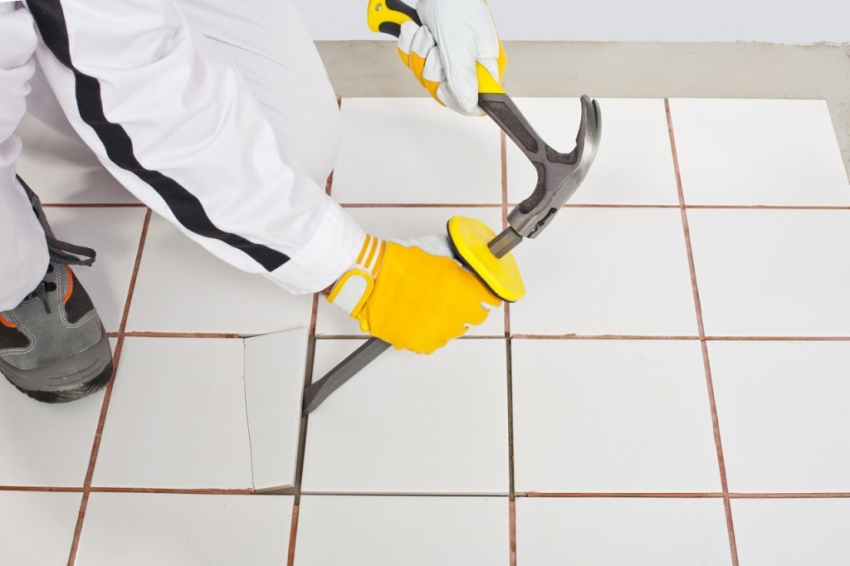
Before laying a new layer of tiles, it is worth checking the fastening of all individual base elements by tapping them with a rubber mallet
- most often the question arises, is it possible to lay tiles on the tiles in the bathroom or in the toilet. In this case, you also need to pay attention to the size of the room, because these rooms are rarely spacious, which means that an additional layer of mortar and facing material will reduce the already small area of the room. So if you see in advance that this method will affect the size of the room, it is better to remove the old tile and put a new one in accordance with all the rules;
- a bad base is old, cracked tiles, the top layer of which has natural damage and is prone to chips. If you lay another layer of tile on such a basis, then most likely it will not last long, and in the near future all the work will have to be redone. And this will entail not only a significant investment of time and effort, but also financial costs;
- before putting tiles on top of a layer of old cladding material, you need to make sure that this does not interfere with free access to all communications and inspection hatches. Otherwise, the slightest breakdown will lead to the need to dismantle both layers of tiles at once for repair work. In this case, it is wiser to think over everything in advance so that in the future you do not have to face such serious problems;
- do not lay tiles on uneven floors. No matter how hard you try, the situation with the slope will only worsen due to the additional layer, so it is better to first dismantle not only the tile, but also the old screed. By carrying out the repairs properly, you will be able to eliminate the existing distortion as much as possible. This is also worth paying attention to before laying the tiles on an uneven wall.
Having considered all these recommendations, we can conclude that before you start laying tiles on top of old tiles, you need to carefully weigh all the arguments. There is always a risk that the old coating will not withstand the load and simply fall off, destroying at the same time a new layer, and it is better to think over all possible options in advance in order to abandon this idea if necessary.
Related article:
How to lay tiles on the floor: installation methods and technology features
Features of the preparation of various types of surfaces. How to rub seams. Selection criteria for tiles and flooring patterns.
How to remove old grout from tile joints
Quite often, one has to deal with a situation where the condition of the old tile is quite satisfactory, but in order to use it as a basis for a new coating, it is necessary to replace the grout for the joints. It is quite possible to carry out this procedure, however, it requires attention and time. Let's look at how to remove grout from tile joints correctly.
In order to remove the old grout, there is a special tool called the "joint expander". It can be used to remove the grout mechanically. By itself, it is a blade with a comfortable handle, but an ordinary knife can be used as an alternative.
Use the blade of a knife or an opener to walk from both sides at an angle and straight. When doing this, be careful not to chip the edges of the tiles. It is worth noting that doing this "manually" will not work quickly, so you can use a drill with a thin drill or an electric chisel.
Important! If, in the process of removing the old grout, the tile also began to crumble, it is better to abandon the idea of laying another layer on top, even if there is a new grout.
How to remove old grout from tile joints if it is silicone
Silicone grout also requires dismantling and replacement, especially if the room has not been provided with good ventilation.Very often you have to deal with the fact that the seams are affected by mold, which is almost impossible to remove. Therefore, before laying new tiles on top of old tiles, you need to take care of the hygiene of the joints.
Removal of silicone sealant is carried out with a sharp knife or a special scraper. After that, additional cleaning is carried out with a vacuum cleaner.
Helpful advice! There are special tools available to remove silicone faster and with less effort. Such compositions are applied using an assembly gun, after which it is necessary to wait at least 24 hours. Then the seams are wiped with a rag or paper.
Is it possible to lay tiles on tiles on the floor: features of the work
The floor covering, in contrast to the wall covering, is not subject to the influence of gravity. Therefore, in a sense, styling is easier. But in this case, another difficulty arises - the new coating will regularly be subjected to serious stress.
Before gluing the tiles to the floor, you need to check each element of the bottom layer at least thoroughly. To do this, you can use the same hammer for tapping, but you can try another approach: an object with a flat base (a box will work well), you need to smoothly drag it along the surface, carefully observing so that not a single tile falls through even a few millimeters. It can be difficult to do this in a small bathroom or toilet, but for larger rooms it is a very effective way.
In general, all the recommendations that are provided in the previous section are also relevant in the case of working with the floor. It is only advisable to give preference to mineral compositions. Thus, the surface will be provided with greater elasticity, which will allow it to withstand heavy loads and temperature changes.
Helpful advice! Before laying the floor tiles on top of the old ceramic coating, you do not need to carry out as much preparatory work as in the case of the wall surface. But it is still worth moistening the base before applying the glue, as this will positively affect the adhesion.
Is it possible to make a self-leveling floor on an old tile
As a basis for a new coating, you can also use a self-leveling floor, the installation of which is carried out directly on the surface of the old tile. As in all previous cases, a mandatory procedure is a thorough check of the quality of the attachment of the lower layer. All loose elements must be dismantled without fail.
It is worth paying attention to the fact that in cases when it comes to working with a glossy surface, the top layer of the coating is removed in order to ensure the necessary level of adhesion between the mortar and the tile. Filling and further work are carried out according to the standard algorithm.
Helpful advice! For laying a new layer of tiles, a thick layer of self-leveling floor is not required. Its thickness should not exceed 5 mm. The main thing is to evenly distribute the composition over the entire surface.
Taking into account the opinion of experts, we can say that it is possible to make a self-leveling floor over a tile only in extreme cases. In this case, the area of the room should be small, and the requirements for the operational characteristics of the surface are minimal.
Is it possible to lay tiles on tiles outdoors
A very interesting question that may arise is whether it is possible to lay a new layer of paving slabs on top of the old one.Of course, such a procedure is often unjustified, but nevertheless, in some cases, this technology is resorted to in the process of arranging garden paths, terraces and summer grounds.
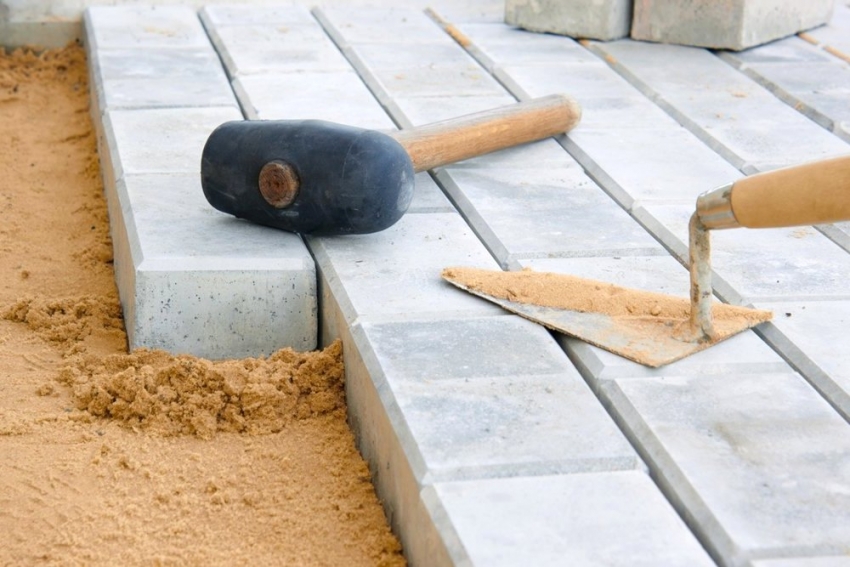
When laying a new layer of paving slabs on an old one, it is necessary to observe the laying of all layers of the substrate
As is the case with the tiles laid on the old flooring inside the house, the main criterion is the quality of the fastening of the lower layer. You can check using a pry bar or a sturdy knife. Using such tools, you need to try to delete one of the elements.
Important! If the tile was displaced with a knife, but this required some serious physical effort, then such a coating can be used as a base. If the tile is removed easily, in the future this can cause deformation of the top layer.
On top of the old layer of tiles, a new pillow is poured, which should consist of three layers - loose soil, gravel, sand. In this case, it is necessary to compact each layer separately. On top, according to standard technology, a new layer of paving slabs is laid.
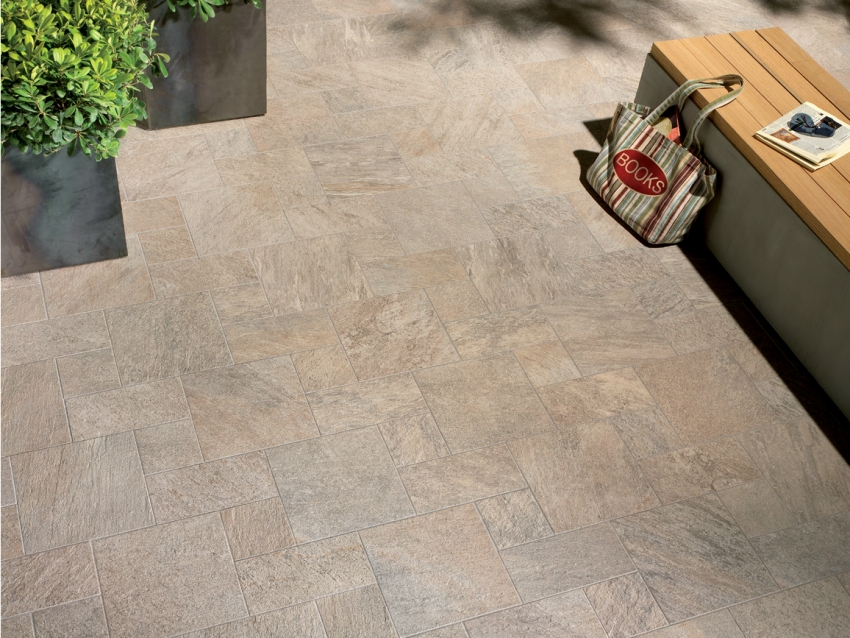
When laying a new layer of paving slabs on the tiles, it is worth considering that the floor level will rise due to the significant layer of all substrates
Thus, the answer to the question of whether it is possible to lay tiles on tiles on the bathroom floor or even on the walls is rather in the affirmative. Of course, in the process of work, you will have to follow many rules and recommendations, and the end result can almost always turn out to be unpredictable, but in principle, it is quite possible to do this.
